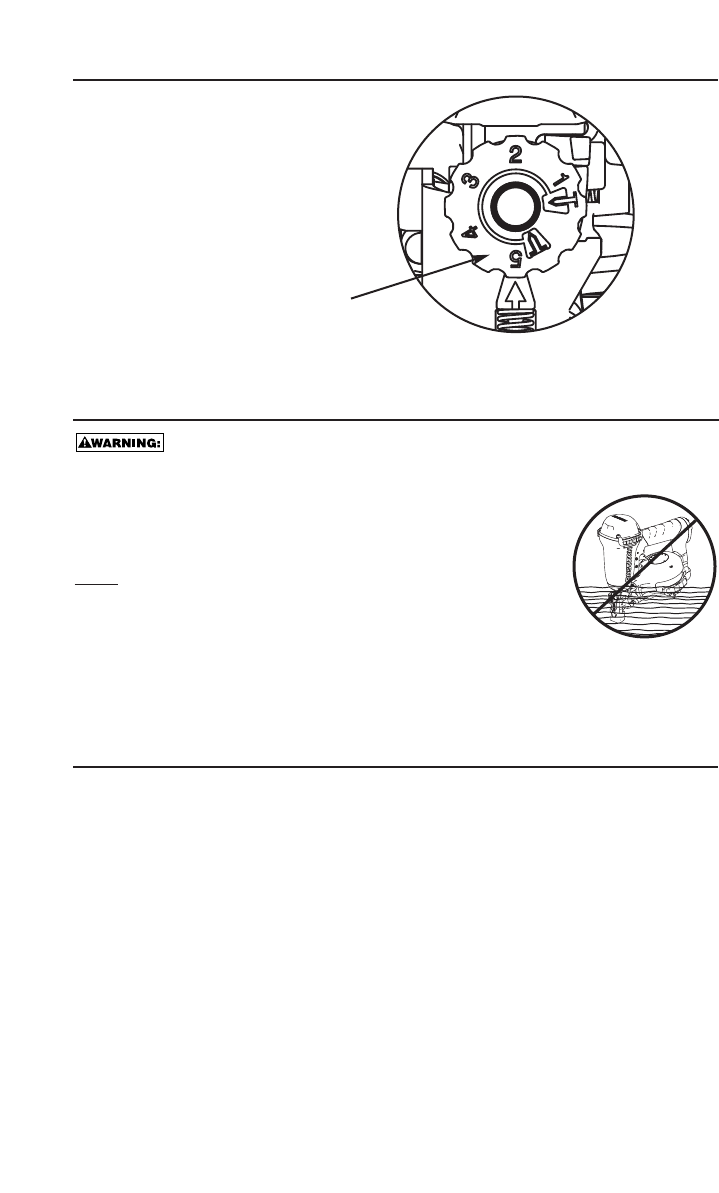
DIAL-A-DEPTH™ FASTENER CONTROL ADJUSTMENT
The DIAL-A-DEPTH™ Fastener control adjustment
feature provides close control of the fastener drive
depth: from flush with the work surface to shallow or
deep countersink.
First set the air pressure for consistent drive in the
specific work as described on page 4, then use the
DIAL-A-DEPTH™ fastener control knob to give the
desired depth of drive.
IN ADDITION TO THE OTHER WARNINGS CONTAINED IN THIS
MANUAL OBSERVE THE FOLLOWING FOR SAFE OPERATION
• Use the BOSTITCH pneumatic tool only for the purpose for which it was designed.
• Never use this tool in a manner that could cause a fastener to be directed toward the user
or others in the work area.
• Do not use the tool as a hammer.
• Always carry the tool by the handle. Never carry the tool by the air hose.
• Do not alter or modify this tool from the original design or function without approval from
BOSTITCH.
• Always be aware that misuse and improper handling of this tool can cause injury to
yourself and others.
• Never clamp or tape the trigger or contact trip in an actuated position.
• Never leave a tool unattended with the air hose attached.
• Do not operate this tool if it does not contain a legible WARNING LABEL.
•Do not continue to use a tool that leaks air or does not function properly. Notify your nearest
Bostitch representative if your tool continues to experience functional problems.
DEPTH ADJUSTMENT KNOB
7
Tar and dirt may build up on the nose and trip lever. This can prevent correct operation.
Remove any buildup with kerosene, #2 fuel oil or diesel fuel.
Do not dunk the nailer into these solvents beyond the height of the nail
heads, to avoid getting the solvent into the drive cylinder.
Dry off the nailer before use. Any oil film left after cleanup will accelerate
the tar buildup, and the nailer will require more frequent re-cleaning.
NOTE:
Solvents sprayed on the nose to clean and free up the trip
may have the opposite effect! The solvent may soften the tar on
the shingles and cause tar buildup to be accelerated. Dry operation
is better, as noted above.
Do not use gasoline or similar highly flammable liquids to clean the nailer.
Vapor could be ignited by a spark, causing an explosion.
CLEANING THE ROOFING NAILER


















